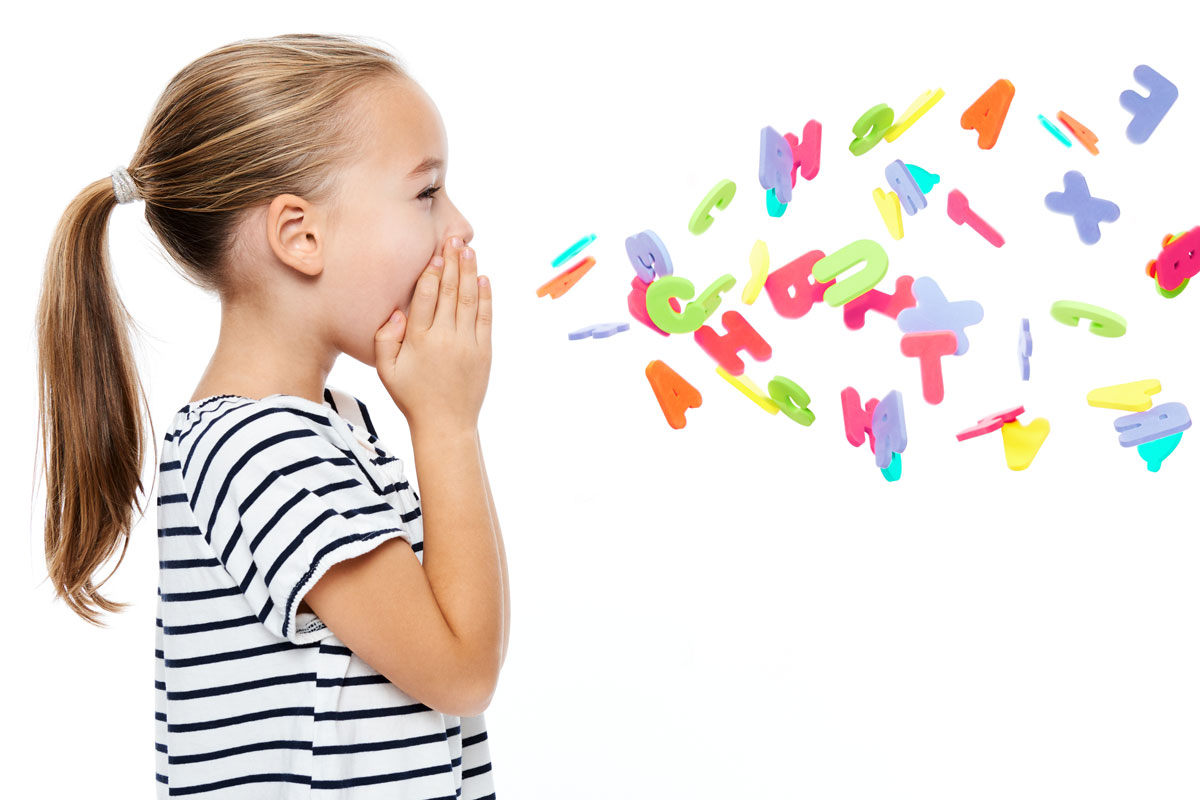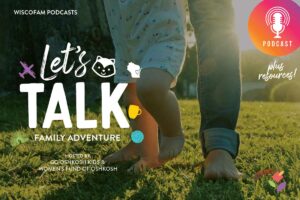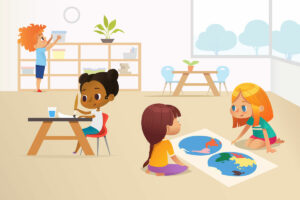Being a new parent is one of the most exciting and scary times of your life. There are so many unknowns. When your baby is firstborn, you are consumed by trying to get your baby to sleep and feeding schedules. As your baby grows, your questions change to wondering about their development and what is and isn’t “normal.” Normal language development in toddlers is a big question for a lot of parents. Finally, hearing their sweet sounds is music to your ears, but it also comes with questions like, “When should a baby start babbling?” “When do babies say their first word?” and “When should a toddler be able to follow simple directions?”
When it comes to speech and language, many people with the best intentions suggest taking a “wait and see” approach. As a speech-language pathologist, I encourage you to go with your parent’s intuition whenever you have concerns about your child. When I evaluate a child for speech and language concerns, I strongly consider the parents’ concerns. Why? Because parents are the ones that are with the child the most and know them the best. Even if you’re not the official “expert,” you are the expert on your own child.
The Difference Between Speech and Language
Speech and language are often lumped together, but they are different. Speech has to do with the sounds a child produces, such as vowel sounds and early developing sounds like b, p, d, and m. On the other hand, language has to do with the actual words they are saying (vocabulary), the length of their sentence, understanding simple directions, labeling objects, and answering simple questions. For a more in-depth definition, check out the American Speech-Language-Hearing Association website.
Normal Language Development Milestones in Toddler
Birth to One Year
- Coos
- Babbles a consonant and vowel, such as da, ba, ma
- Understands simple directions like “come here”
- Imitates/repeats sounds
- Produces 1-2 words
One Year to Two Years
- Identifies simple body parts
- For example when asked, “Where are your ears?” child points to their ears
- Follows simple one-step directions, like “Go get your shoes.”
- Starting to use new words
- Producing early speech sounds such as p, b, m, h, and w
- Ask simple questions, like “What’s that?”
Two Years to Three Years
- Combines two words together by age 2
- Understands simple basic concepts like up, down, go, stop
- Produces speech sounds like p, b, m, t, d, n, w, h
Speech and language development can be highly variable between children. Speech and language skills are typically developed around these times but keep in mind that every child is different.
My Experience Referring My Daughter for Language Concerns
Even though I have a degree in speech-language pathology, I still had questions as my daughter went from being a baby to a toddler. She wasn’t saying many words at 18 months and wouldn’t imitate any sounds or words as we played. She babbled a lot less than my older daughter, which also concerned me.
I brought up my concerns to my doctor at her 18-month checkup, but my doctor wasn’t concerned. If I didn’t have a background in speech and language, I probably would not have gotten a speech evaluation. Something in my intuition told me that I should consider getting an evaluation for my daughter because I noticed a couple of red flags. She wasn’t imitating and had very few words and sounds. She would also say a new word, and then we wouldn’t hear that word again.
Many parents don’t know this, but you don’t need a doctor referral to refer your own child to Birth to Three. If you have concerns, an evaluation is a helpful step. It doesn’t mean they will automatically qualify for services. If they don’t qualify, it will at least put your mind at ease. If they do qualify, you are intervening early, and that is a huge key to progress in children with speech and language disorders. I referred my daughter last winter, and I’m happy to report she’s made tremendous progress with simple strategies we’ve been using at home.
Simple Strategies to Support Language Development in Toddlers
You can use some very simple strategies to support your child’s speech and language development at home. Some ideas are:
- Sign language
- Songs
- Fingerplays like Head, Shoulders, Knees, and Toes or nursery rhymes
- Read simple books out loud
- Real photo books like First 100 Words are wonderful for labeling and identifying everyday objects
- Narrate your daily routines
- Put words to everything you do. For example, when unloading the dishwasher, say “I’m putting the cups away.”
- Don’t anticipate their every need. Allow them to communicate what they need to you. Don’t automatically help them with everything. Give them the opportunity to ask for help or sign “help.” If they don’t respond, show them the sign and model for them.
- Give them a choice between two things when asking questions, like “Do you want applesauce or peaches?” This allows them to use the word and not just say yes/no.
What To Do If You Have Concerns
If you have concerns about your child’s speech or language development, it’s essential to take them seriously. I recommend first talking to your doctor. If you continue to have concerns after you talk to your doctor and they don’t recommend an evaluation, I suggest calling Early Intervention (Birth to Three) Program of Outagamie and Winnebago Counties and making a parent referral. Evaluations are FREE of charge, and you may be eligible to receive support for therapy services.
Even if you’re not a hundred percent sure if you should be concerned, it is always a good idea to get an evaluation. If your child’s development is atypical, it is better to get help earlier rather than waiting. It can make all the difference!








